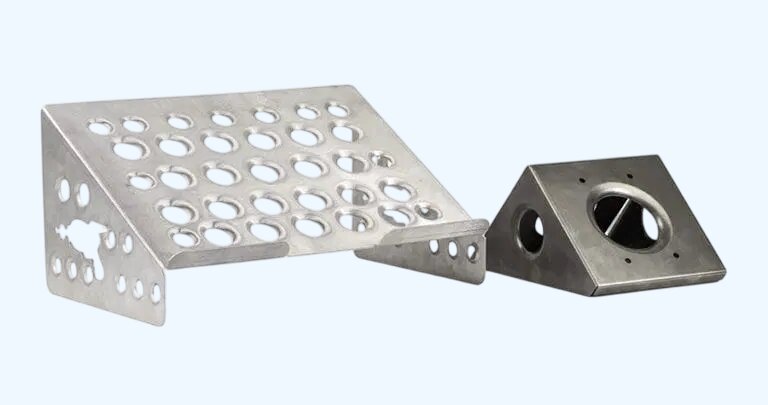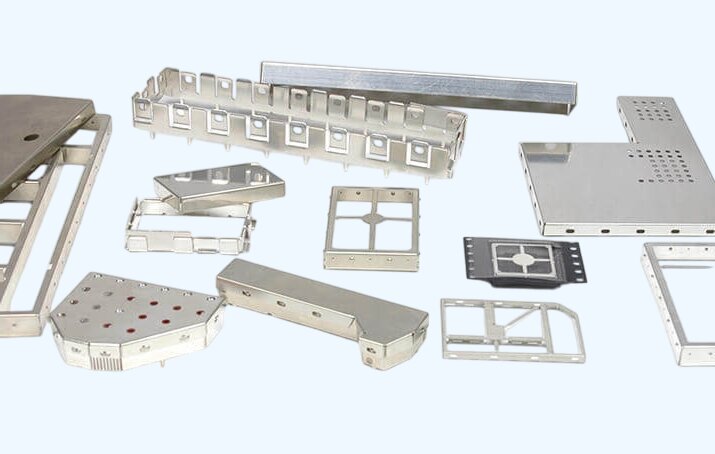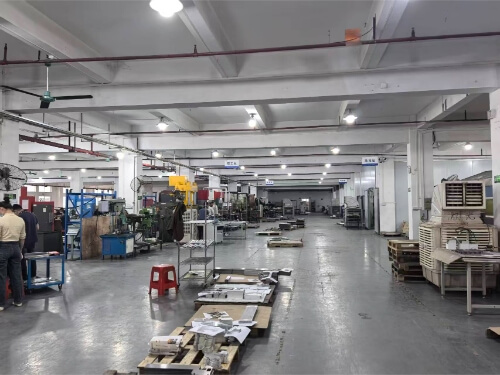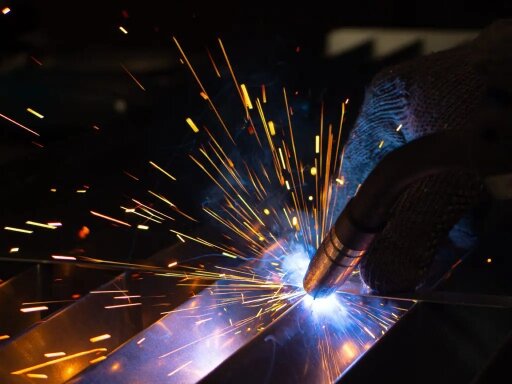In my everyday work, I am often asked questions about materials. Especially about the difference between iron and steel. Understanding which materials to use for your project is crucial.
Iron is a heavy, sturdy element prone to corrosion and rust. Steel is a mixture of iron and carbon, sometimes with other elements, to improve its properties. Because of this mixture, steel is more resistant to corrosion and more durable than pure iron.
Iron is a durable material used for centuries as a construction and tool material. Steel’s superior strength and versatility allow it to meet modern engineering needs more effectively.
Let’s break it down further in the following sections, where I’ll discuss the composition, uses, and why one might be preferable over the other in specific scenarios.
What is Iron?
Definition and Elements Characteristics
Fe is the symbol for iron, an essential element of the periodic table and one of the world’s most abundant metals. Iron is a critical component of our planet’s crust and has an essential impact on the development of our civilization.
Iron is a metal that has impressive magnetic and strength properties. It can be found in ferrous (Fe2+) and ferric (Fe3+), affecting its chemical properties and rust when exposed to moisture and oxygen.
Iron Types
The carbon content of iron and the manufacturing process can help to classify it. Primary forms include:
- Pig Iron is a basic form of iron produced in a blast furnace. It contains higher levels (around 3,5% to 4.5%) of carbon along with other contaminants. Pig iron is used as a primary raw material to produce steel and other iron-based materials.
- This cast iron has a carbon percentage ranging between 2% and 4%. It is known for being fluid and easy to cast. It is also brittle, non-malleable, and brittle due to its high carbon content. This makes it suitable for heavy machinery, automobile parts, and cookware.
- Wrought Iron is almost pure iron, containing less than 0.1% carbon. It is tough, malleable, and less fusible than cast iron. Wrought iron has been historically valued for ornamental ironwork and structures requiring a weldable material.
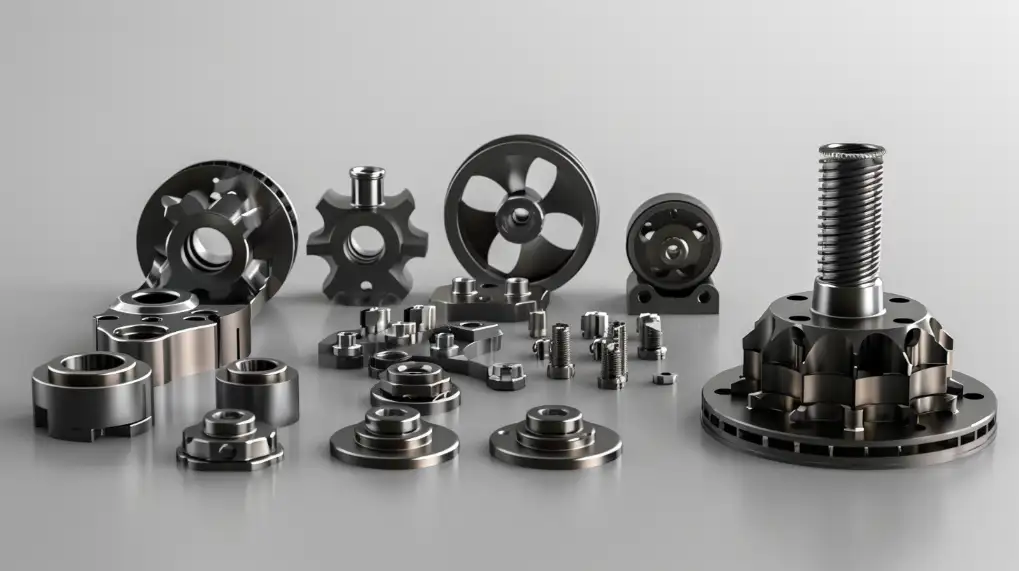
What is steel?
What is it, and how is it made?
Steel is a primary alloy made from iron with a carbon content between 0.2% and 2.1%. Carbon added to iron improves its fracture resistance and strength while maintaining an acceptable level of ductility.
Steel production is a two-stage procedure that begins with the smelting and production of pig iron. The pig iron is mixed with scrap metal, various elements, and carbon. It is then melted in a blast furnace to obtain the desired chemical composition.
Types of Steel
Steel’s chemical composition and the methods used to manufacture it are classified. Here are some of the most common types.
- Carbon Steel: This is the primary type of steel. Its carbon content classifies it into low, medium, and high-carbon steel. Low-carbon or mild steel contains up to 0.3% of carbon. Medium ranges between 0.3% and 0.6%. High carbon steel has 0.6% to 2.1%.
- Alloy Steel: By adding different alloying components like manganese and nickel to steels, alloy steels improve hardness, toughness, and wear resistance.
- Stainless Steel: Stainless Steel contains a significant amount of chromium, at least 10%. It may also contain nickel or molybdenum.
- Tool Steel: This steel has been formulated with additives such as tungsten and molybdenum. It is also enhanced with cobalt and vanadium.
Physical and Chemical Properties
Durability and Hardness
- Hardness levels: Steel has a higher hardness than iron because of its carbon content.
- Usability & Longevity: Steel’s high hardness increases its durability and longevity, particularly in construction and machines.
Corrosion resistance
- Rust Susceptibility: Steel rusts faster than iron.
- Protective measures: Coatings such as galvanization, paint, or stainless steel formulations can help protect against corrosion.
Melting Point
- Iron: Melts at around 2800degF or 1538degC.
- Steel: Lower melting points, ranging between 1370degC and 1510degC (2,500degF to 2,750degF), depending on alloying components.
Conductivity and density
- Thermal and Electrical Conductivity: The iron conducts heat and electricity more efficiently than steels.
- Steel Density: Steel has a slightly lower density than iron. It varies depending on the alloying elements and affects weight and strength ratios.
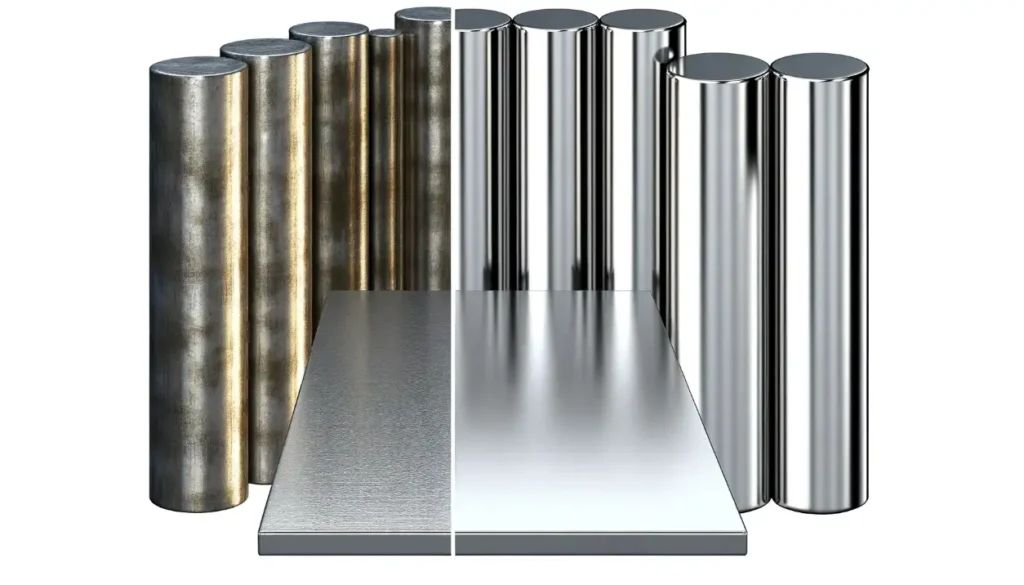
Applications and Industrial Uses
Construction and Infrastructure
- Steel and Iron Role in Building Structures: Essential to structural frameworks and supports.
- The iconic steel and iron construction case studies include: Burj Khalifa and the Eiffel Tower.
Automobile and Transportation
- Use in Vehicle Frameworks and Machinery: Integral to manufacturing vehicle bodies, frames, and engines.
- Advances in Material Science for Transportation: Development of high-strength alloys for lighter and more durable vehicles.
Consumer Products
- Everyday Items Made from Steel and Iron: Includes tools, hardware locks, and stainless steel kitchen sinks.
- Consumer Trends: The demand for stainless-steel appliances is increasing due to their durability and aesthetic appeal.
Iron vs steel: Which is stronger? Which is stronger?
Steel is more robust than iron. Here’s why:
Iron is soft and malleable in its purest form. However, its tendency to deform and corrode makes it unsuitable for high-strength uses.
Steel is an alloy primarily made of iron but also enhanced with other elements such as manganese and chromium. Carbon acts as a hardening element, preventing dislocations of the iron crystal lattice. This is why steel can withstand external forces better than pure iron.
Controlling the alloying elements can tailor different types of steel to meet different strength requirements. High-carbon steels, for example, are hard and used to make tools and cutting devices. Alloy steels, on the other hand, are made with elements like chromium and vanadium to reduce corrosion and increase wear resistance.
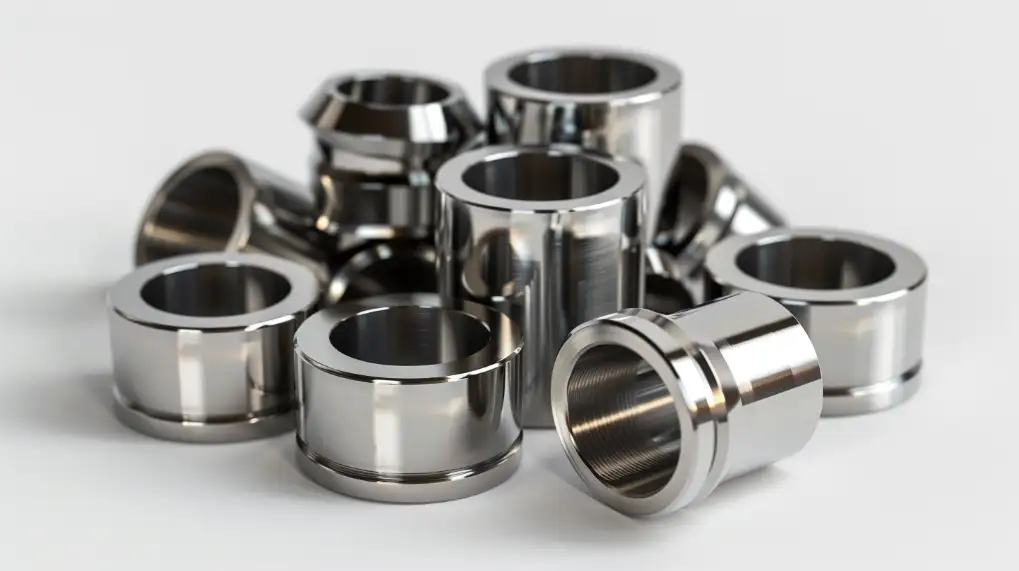
What is the difference between steel and iron?
Our program is focused on identifying the differences between steels. Here are some ways to tell the difference between these two materials.
Visual Inspection
Texture and Color: Pure Iron is usually more silvery gray and has a softer texture. Steel can appear more luminous and feel more challenging, depending on the type and treatment. Iron rust is flakier, redder, and more visible, while rust on steel, mainly stainless steel, may not be visible.
Surface Finish: Steel has a smoother finish because of the industrial processes that it goes through. Iron, on the other hand, may have a rougher surface due to its crystalline structure.
Magnet Test
This simple test is still valid, as iron and steel are ferromagnets. Magnets adhere strongly to iron and steel, but the reaction with stainless steel is less intense.
Spark Test
This test involves grinding metals and watching the sparks they emit. Iron produces shorter, fewer sparks with a smaller branching pattern. Steel, particularly high-carbon steel, produces sparks with longer, brighter patterns that are more complex.
Chemical Testing
Rust inspection: Expose a small metal piece to corrosive environments and observe. Due to its lack of alloying and purity, iron rusts faster and more intensely than other steel types.
Acid test: Adding a drop or two of nitric acids will make the iron react more intensely, resulting in a darker color. Steel typically shows less intense reactions with lighter residues.
Conclusion
When selecting a project material, it is important to know the differences between steel and cast iron. Steel enhanced with carbon and other elements offers superior strength and endurance compared to pure ferrous metal, making it essential in industries such as construction, automotive, and consumer products.
Do you need a reliable sheet metal parts manufacturer? Shengen is the place to go. We specialize in sheet metal laser cutting, bending, surface finish, and CNC Machining. Reach out to Shengen Today and seek help from professionals!
FAQs
What is the main difference between steel and iron regarding carbon content?
Steel contains between 0.2% and 2.1% carbon, which increases its strength and durability. Iron, on the other hand, has less carbon and is softer and more malleable.
What is the difference between pure iron and steel?
Steel is stronger than pure iron because of its carbon content and other alloying components, which reinforce its structure and improve its mechanical properties.
What are the major environmental concerns related to steel and iron production?
Environmental degradation is a result of high energy consumption and carbon dioxide emissions.
Steel is more sustainable than Iron?
Steel is more sustainable than iron due to its durability and ability to be recycled repeatedly without deteriorating properties. This reduces the requirement for new raw materials.
What has been the impact of technological advances on steel and iron properties?
Technological advancements have significantly improved steel and iron properties, such as their strength, flexibility, and corrosion resistance. The use of alloys and new processing techniques continues to increase their efficiency and applications.
More Resources:
Environmental impact of steel and iron production – Source: Theworldcou
Recycling and sustainability of steel: – Source: Clarifygreen
Technological advancements in metallurgy – Source: Medium
Hey, I'm Kevin Lee

For the past 10 years, I’ve been immersed in various forms of sheet metal fabrication, sharing cool insights here from my experiences across diverse workshops.
Get in touch

Kevin Lee
I have over ten years of professional experience in sheet metal fabrication, specializing in laser cutting, bending, welding, and surface treatment techniques. As the Technical Director at Shengen, I am committed to solving complex manufacturing challenges and driving innovation and quality in each project.

